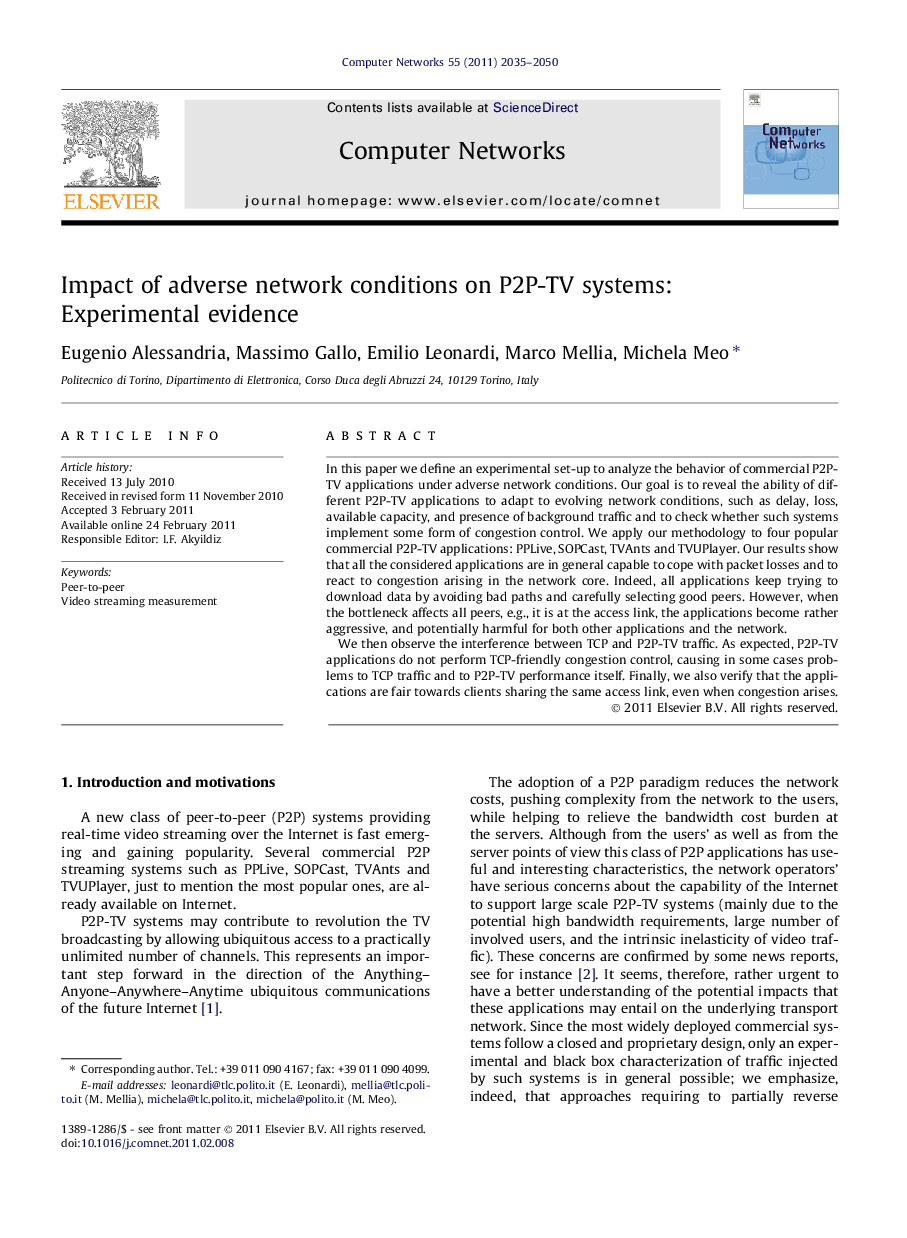| Article ID | Journal | Published Year | Pages | File Type |
|---|---|---|---|---|
| 450969 | Computer Networks | 2011 | 16 Pages |
In this paper we define an experimental set-up to analyze the behavior of commercial P2P-TV applications under adverse network conditions. Our goal is to reveal the ability of different P2P-TV applications to adapt to evolving network conditions, such as delay, loss, available capacity, and presence of background traffic and to check whether such systems implement some form of congestion control. We apply our methodology to four popular commercial P2P-TV applications: PPLive, SOPCast, TVAnts and TVUPlayer. Our results show that all the considered applications are in general capable to cope with packet losses and to react to congestion arising in the network core. Indeed, all applications keep trying to download data by avoiding bad paths and carefully selecting good peers. However, when the bottleneck affects all peers, e.g., it is at the access link, the applications become rather aggressive, and potentially harmful for both other applications and the network.We then observe the interference between TCP and P2P-TV traffic. As expected, P2P-TV applications do not perform TCP-friendly congestion control, causing in some cases problems to TCP traffic and to P2P-TV performance itself. Finally, we also verify that the applications are fair towards clients sharing the same access link, even when congestion arises.
